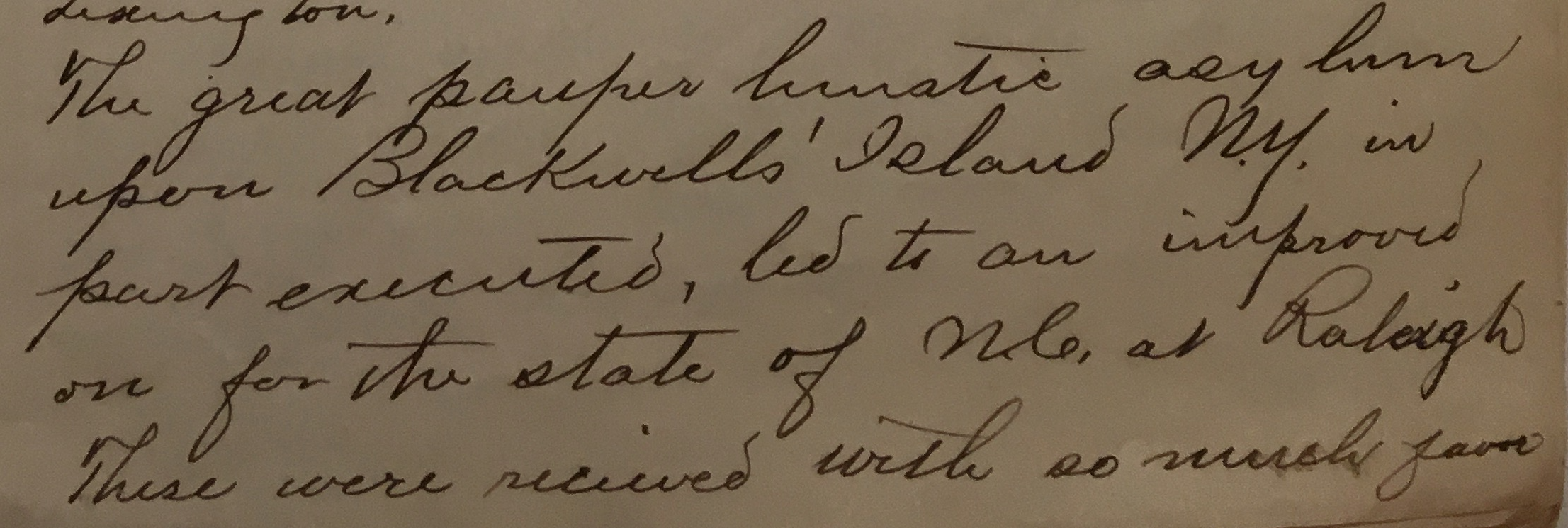
After being shown the Dorothea Dix Hospital admissions ledger at the State Archives of North Carolina (view full story here), it was clear what needed to be done. As handwritten documents, the ledger pages could not be mechanically transcribed, so we undertook manual photographing and transcription of the ledgers. Although the volume was bound and fragile, the Reading Room staff allowed us to photograph each page. CHW teammate Sarah Almond developed a work process for transcribing and digitizing the admissions ledgers. We recruited four undergraduate students who were alumnae of Robert Allen’s first year seminar on family history as (paid) undergraduate research fellows in the CHW.
They started transcribing the ledger pages in January 2018, and by August of that year had produced what will soon become the first comprehensive patient database of a 19th-century American insane asylum. This, in itself, was a remarkable accomplishment: four undergraduates who themselves had not been taught cursive writing became more than competent readers and transcribers of cursive texts that had been created in the context of admitting someone to an insane asylum. The transcription spreadsheet template, complete with confidence indicators (signifying students’ confidence in the accuracy of their trancriptions), was developed by Sarah Almond.
Among the previously sequestered records exposed by the new open records law was another extraordinary collection of patient intake forms. Kept from 1887 to at least 1934, what are referred to as “General Case Books” are bound volumes of printed forms, 11 x 14”, each of which contains some 100 fields filled at the time of patient admission.
The top half has personal information about the admittee, family history, and the physical condition. The bottom half contains information and observation regarding the nature of the mental illness: supposed cause/s, duration of “attacks,” manifestations. We now have a subset of the more than 5500 patients admitted between 1887 and 1920, about whom we have data from both sets of records.
Like the admissions ledgers, we decided to undertake the manual transcription of the General Case Book forms with the help of trained undergraduate students. Sarah Almond modeled the transcription spreadsheet template off of the admissions ledger template, including confidence indicators for important fields such as first name, last name, and more. Assuming that the more recent General Case Book forms would be the most legible for students, we began with having them transcribe General Case Book forms from 1918. From there, students moved backwards in the archival records. To date, our students have transcribed thousands of General Case Book forms and have transcribed these forms as far back as 1905.
The transcription of these records has been crucial in our endeavors to create different datasets and to trace the emergence of particular diagnostic practices at Dix.


